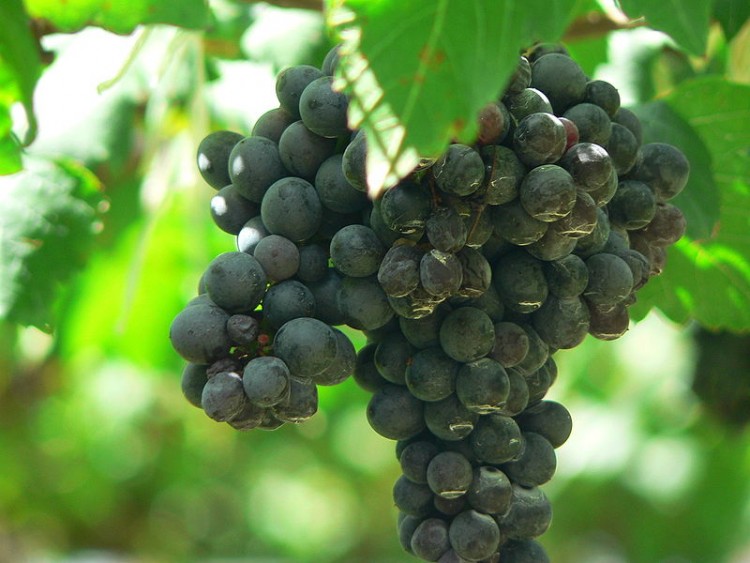7 Must-Try German Wines (Wine Spectator)
Tasting Highlights’ wine reviews are fresh out of the tasting room, offering a sneak peek of our editors’ most recent scores and notes to WineSpectator.com members.
Germany is not all about Riesling. As I wrote last November, Pinot Noir has drastically gone up in quality in the country, where it’s known as Spätburgunder. Other varieties like Silvaner and Pinot Blanc (known as Weissburgunder) have also benefited from more attention from winemakers in recent years.
Today’s selection manifests this trend. Georg Breuer leads the pack with a Pinot Noir from Rheingau that easily stands up to a good village-level red Burgundy. Two other Pinots, from August Kesseler and Shelter, are charming and inviting as well. We’ve also included four great-value Rieslings for good measure because, well, it is Germany after all.
GEORG BREUER Pinot Noir Rheingau GB 2016 Score: 90 | $26
WS review: Very vibrant and finely knit, with dark cherry, hibiscus tea and rose notes, all linked by lively acidity. This shows light tannins as well, which add to the structure and harmony overall. Mouthwatering finish. Drink now through 2025. 114 cases imported.—A.Z.
Why it’s of note: This is an outstanding, affordable Pinot made by Theresa Breuer, who runs the Georg Breuer estate. She practices organic farming and uses a combination of stainless steel and used oak barrels in the cellar. This wine is light yet expressive, reflecting the elegance of the 2016 vintage.

AUGUST KESSELER Pinot Noir Rheingau The Daily August 2016 Score: 89 | $27
WS review: Fruity, with a darker profile, featuring a slightly chewy texture and exhibiting red currant and strawberry flavors. Shows mineral undertones midpalate and hints of rooibos tea on the well-defined finish. Drink now through 2025. 1,200 cases imported.—A.Z.
Why it’s of note: The grapes for this entry-level Pinot Noir bottling from August Kesseler are handpicked from several different parcels around Rheingau. The berries from each parcel are vinified separately in barriques, then blended before bottling to create this aromatic red.

KRUGER-RUMPF Riesling Nahe 2017 Score: 89 | $18
WS review: A fruit-forward dry white sporting currant and apricot notes underscored by fine minerality and zesty acidity, this is seductive, and a perfect intro to the drier side of German Riesling. Drink now through 2024. 480 cases imported.—A.Z.
Why it’s of note: Run by the Rumpf brothers, Kruger-Rumpf has improved in quality since their father Stefan started bottling the wines under the family name in 1984. They practice sustainable farming and focus on Riesling, bringing out the unique terroir of the Nahe region. The grapes for this wine come from vines in different parcels that are between 15 to 25 years old.
PETER LAUER Riesling Feinherb Mosel Barrel X 2017 Score: 89 | $21
WS review: A soft version, featuring an elegant profile and flavors of white raspberry, ripe apple and apricot, with hints of graphite, all linked by prominent acidity that brings out the balance. Charming finish. Drink now. 800 cases imported.—A.Z.
Why it’s of note: Florian Lauer runs Peter Lauer today, proudly making wine in the Saar Valley part of the larger Mosel region. The name “Barrel X” comes from the traditional practice of using barrel numbers for identifying different cuvées. However, this bottling aims for a consistent style vintage to vintage, rather than an expression of a single parcel. This wine shows the vibrant nature of Rieslings from the Saar Valley.

TESCH Riesling Nahe Unplugged 2017 Score: 88 | $20
WS review: Aromas of saffron and chamomile lead to zesty orange and green apple notes in this refreshing and mouthwatering white, which leaves a savory mineral impression on the finish. Drink now through 2024. 1,000 cases imported.—A.Z.
Why it’s of note: This is an entry-level bottling from Martin Tesch. “Unplugged” is a nod to acoustic music, played without distortion pedals or other instruments. In keeping with its name, the wine is made with no amplifiers, allowing the pure fruit and terroir to come through.
DOMDECHANT WERNER’SCHES Riesling Rheingau Trocken 2017 Score: 87 | $19
WS review: A dry, zesty and mineral-driven version, with grapefruit and ginger notes mingling with sea salt accents. A bit austere on the finish. Drink now. 15,000 cases made.—A.Z.
Why it’s of note: The Domdechant Werner’sches winery has been family-owned and run since the late 18th century. It’s in its 8th generation today, run by Catharina Mauritz, who farms the vineyards sustainably and is driven by a “less is more” philosophy in the cellar. Their wines are mineral-driven and refreshing expressions of Riesling.

SHELTER Pinot Noir Baden Lovely Lilly 2016 Score: 86 | $19
WS review: A candied, ripe Pinot Noir, with a dense frame and hints of tobacco. Pretty and seductive, but lacks complexity. Drink now. 900 cases imported.—A.Z.
Why it’s of note: Husband-and-wife team Hans-Bert Espe and Silke Wolf run the Shelter winery. This particular cuvée is named after the previous owners’ vineyard and cellar dog, the late Lilly. This is their entry-level bottling of Pinot Noir, showing the charm that people love about Pinot.










